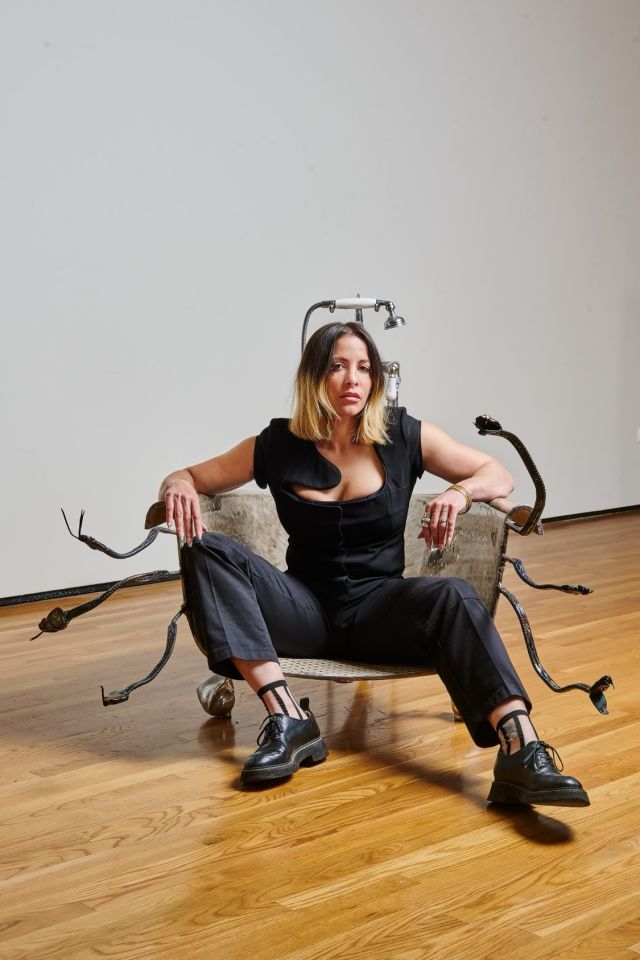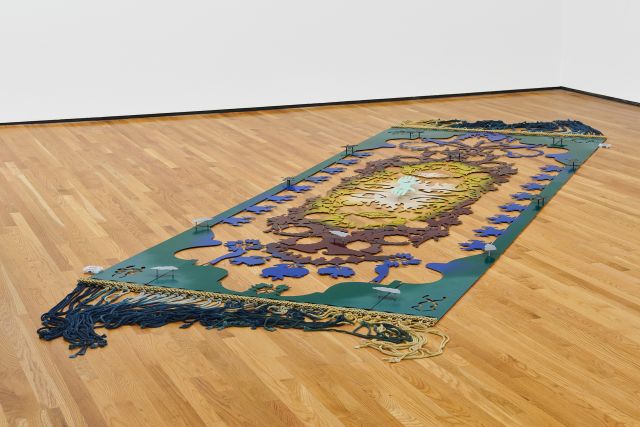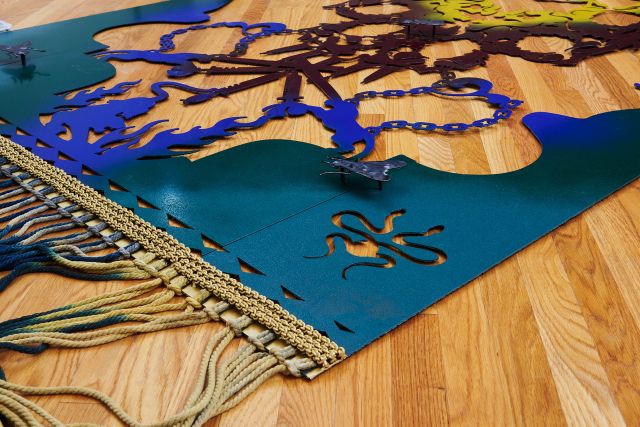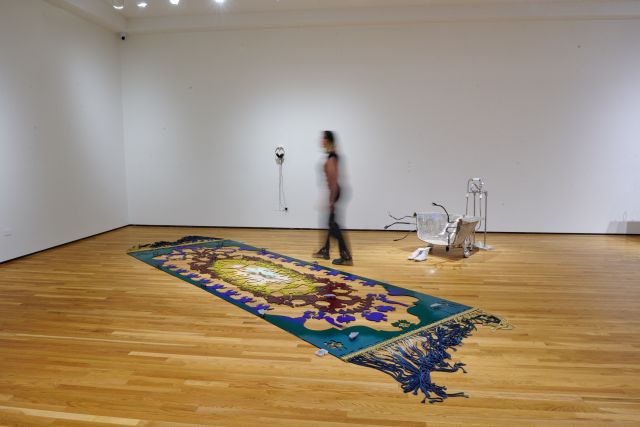
UCSB student Lela Shahrzad Welch, Winner of the Mellichamp Mind and Machine Intelligence's 2024 AI/Human Visual Art Creativity Contest
House of Beetle + Stone by Lela Shahrzad Welch
Artist Statement:
This artwork draws inspiration from Shahnameh, Ferdowsi’s 11th-century Persian epic poem. It reimagines the tale of Zahhak, a tyrannical king plagued by two serpents that come out of his shoulders. Using this story as a point of departure, I drafted a form of mythopoeia as an allegorical framework for a specific event in my life. My short story, developed in collaboration with an AI language model, became the foundational bones for a large-scale sculpture that resembles a Persian rug. This artwork embodies a unique artistic duality: the genesis of its story blends AI and human creativity. At the same time, its physical form merges the precision of computer-aided fabrication with hand-worked details to create a visual narrative of pseudo-mythology.
The “rug,” approximately 15 feet long and installed on the ground, looks to the narrative aspects of Persian rug making and the arabesque, weaving a visual narrative throughout its design. It requires the viewer to move about the work to take in its varied visual elements. My research for this project investigates what we lose in translation. In the Iranian diaspora, I have noticed that my family, particularly, depends on oral histories rather than written texts. Thus, what is passed down to generations becomes muddled, in direct conflict with the bias of the bearer and the jump in language. In tandem with this idea is the “artist’s hand,” as what we determine as art or craft evolves as human influence shifts with machinic evolution.
Process
The sculpture is crafted from 14-gauge steel plate, its form precisely cut using a CNC plasma cutter. Adobe Illustrator was used to make the design, pulling together hand-drawn sketches, imagery from books on ancient Persian art sourced from UCSB’s arts library, and images harvested online and converted to vectors. The design allows for the rug to break down into 12 separate panels. When installed, these pieces are linked by CNC-cut flies, clouds, and hands that bolt into the rug and “float” off the surface.
I used powder coat to paint the steel, and for those unfamiliar with it, powder coating is an industrial process that requires the metal to have a ground to be painted. From this closed circuit, the metal is dusted with a colored powdered pigment. Depending on the pigment, the parts are cured in a kiln at approximately 400°F. To bring back the “artist’s hand,” I hand braided 1⁄8” steel to adorn the ends of the rug and painted these using gold automotive paint through a pneumatic spray gun. The tassels at the ends of the rug are made from hand-dyed 6mm cotton cord using indigo and pomegranate rind for a rich, gradated color palette of blue, yellow, and green.
The language model I used was the latest version of Google’s Gemini Advanced. I wrote my version of the story and an outline of events and uploaded it to Gemini, asking for it to retell the story back to me. I then took this new version of the story to my mother and asked her to translate it into Farsi with one request: that she improvise freely when the translation started to slip. She was allowed to change the story here and there as she saw fit. We then recorded her retelling of the story in Farsi. While the rug was displayed, viewers could also listen to her voice telling the story embedded in the rug.


